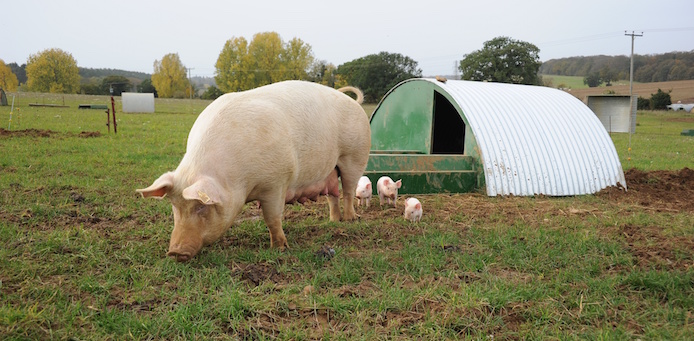Fiona Bennett has been a veterinary surgeon at Garth Pig Practice, based in East Yorkshire, since October 2016 having qualified from Liverpool University
Writing this in late July means that most of you will hopefully be mid-harvest. As we cannot control the weather, we need to be able to manage for all eventualities.
Hot weather is just as important to manage as cold weather and the impact heat stress can have on fertility and growth rates should not be underestimated.
There is also an increased risk of vice, such as tail-biting, in these hot conditions – which can be mitigated by reducing stocking density. Pigs cannot sweat, so it is important to provide them with other ways to cool down – ventilation, wallows, wet areas and plentiful water are all key.
Providing muddy wallows outdoors is important to help cool down and add a layer of ‘sunscreen’.
Encouraging sows to go into the arks to allow suckling can be difficult and you don’t need me to tell you that no milk for piglets causes a multitude of problems.
Ventilation flaps on the back of arks should be opened, but draughts at piglet level will only serve to increase the likelihood of scour. Painting the ark roof white can help deflect the sun’s heat, especially if the galvanise has worn off.
Fertility of boars can be affected for six to eight weeks after hot weather, so careful monitoring is needed for sperm defects and count. While, in the UK, we are normally more concerned about cold shock in semen, it is important to remember that semen needs to be kept at 16-18C and out of direct sunlight in order to remain fertile.
Sows are less likely to hold in pig if they are stressed at service. Avoid this by serving early in the morning or late in the day. Where possible, extra space should be provided and wet areas are key for allowing pigs to cool down.
I have seen sprinkler systems over concrete areas working very well in hot weather, particularly in reducing the number of abortions and returns ofteb seen in this sort of climate. Serving more sows and gilts in July and August can minimise the impact of a reduced farrowing rate, both from summer heat stress and the impending autumn infertility hiccups.
Checking water flow rates in all buildings is crucial – pigs will undoubtedly eat less and drink more. If water medicating, be aware that pigs will drink the solution faster so extra dilution may be needed to make sure all pigs receive medication. If using header tanks, this will require more frequent additions of medication, the same amount divided over more additions – little and often.
Enjoy topping up the farmer tan!




